Abstract
The concentration of cellular oestrogen receptor (RE) was measured in both the soluble and nuclear-pellet fractions of biopsies from 1,000 breast cancers. Data suggest that functional steroid RE is always in equilibrium between the soluble and nuclear fractions. However, biopsies from only one-third of patients contained detectable amounts of high-affinity RE in both fractions. Thirty patients out of 42 (71%) whose biopsies contained RE in both fractions, showed objective remission after receiving some form of hormonal manipulation as sole treatment. Response rates in the other categories ranged from 9% for those whose biopsies contained no detectable RE to 24% for those who displayed soluble RE alone. The presence of RE in both fractions of primary disease, whereas RE-negativity was maintained during progression from primary to secondary disease. Other aspects of RE status in relation to stage of disease are analysed.
Full text
PDF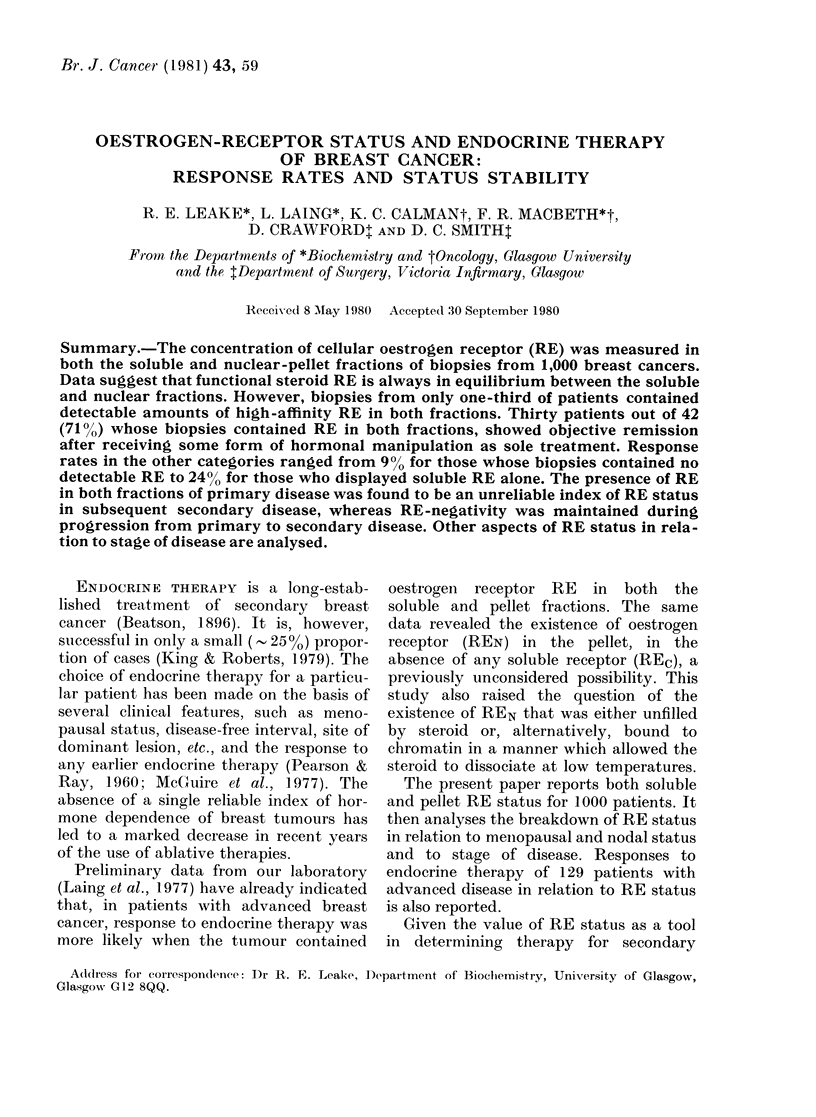
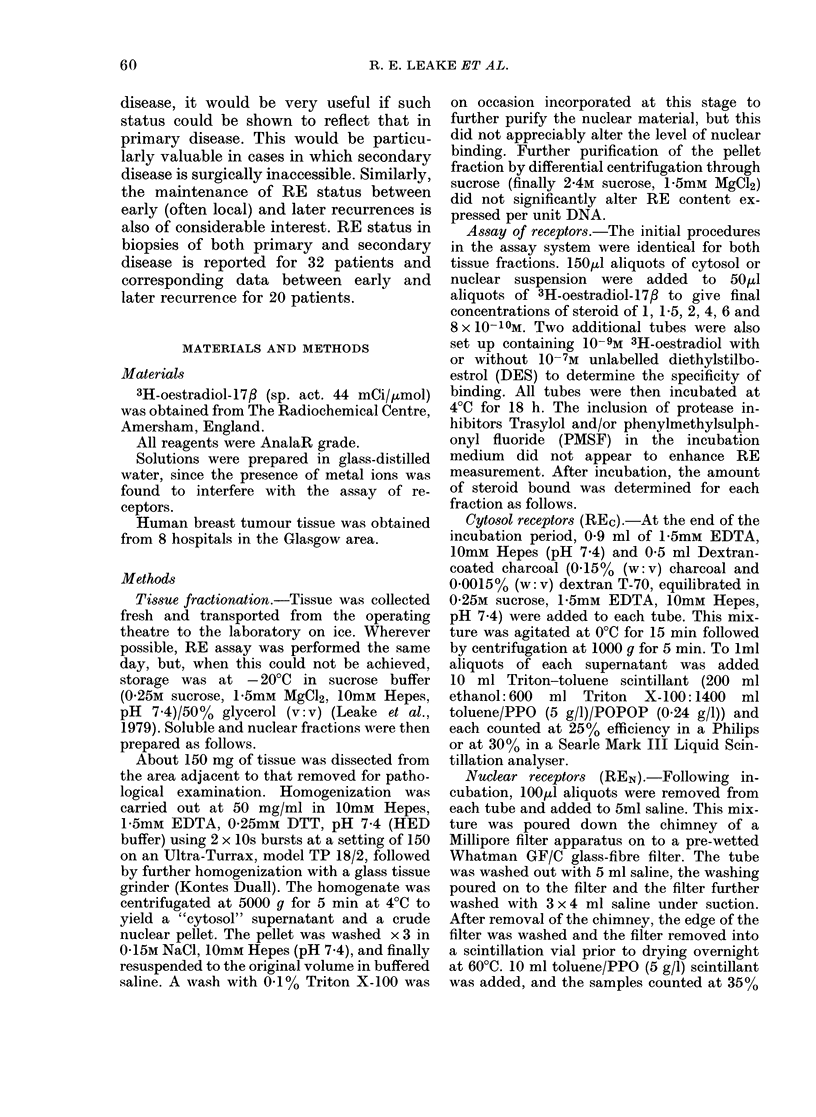
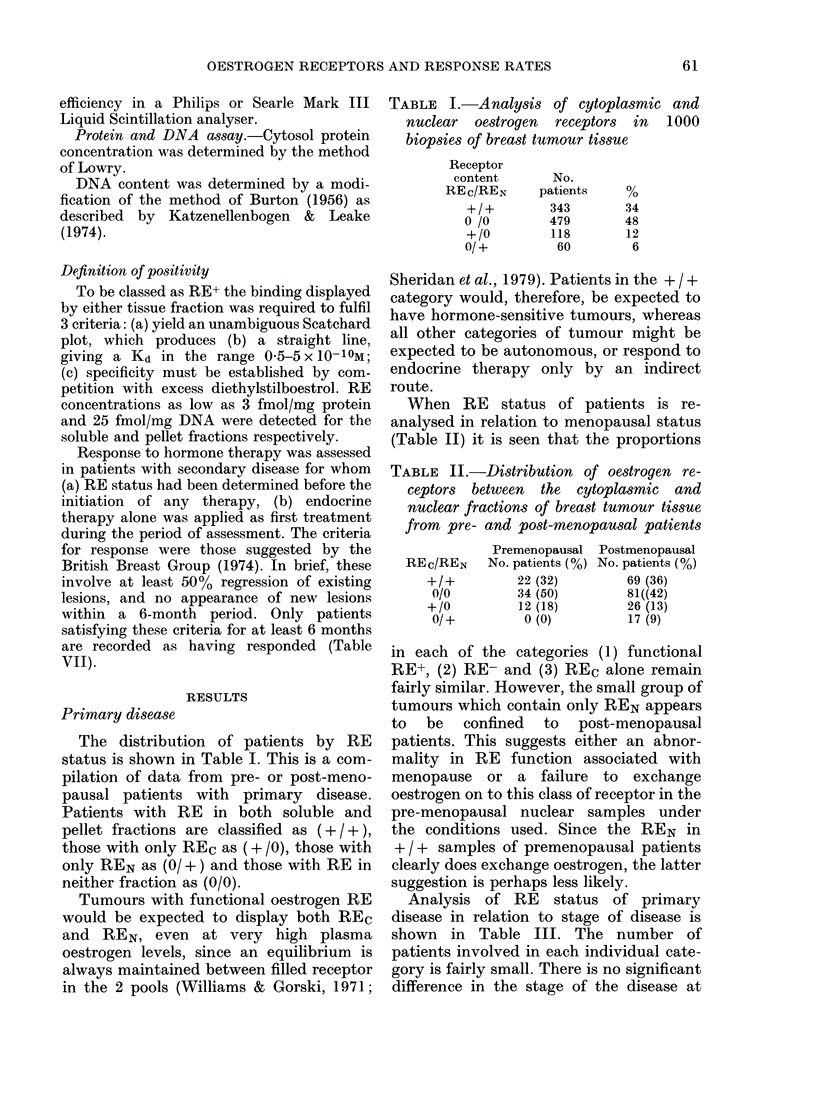
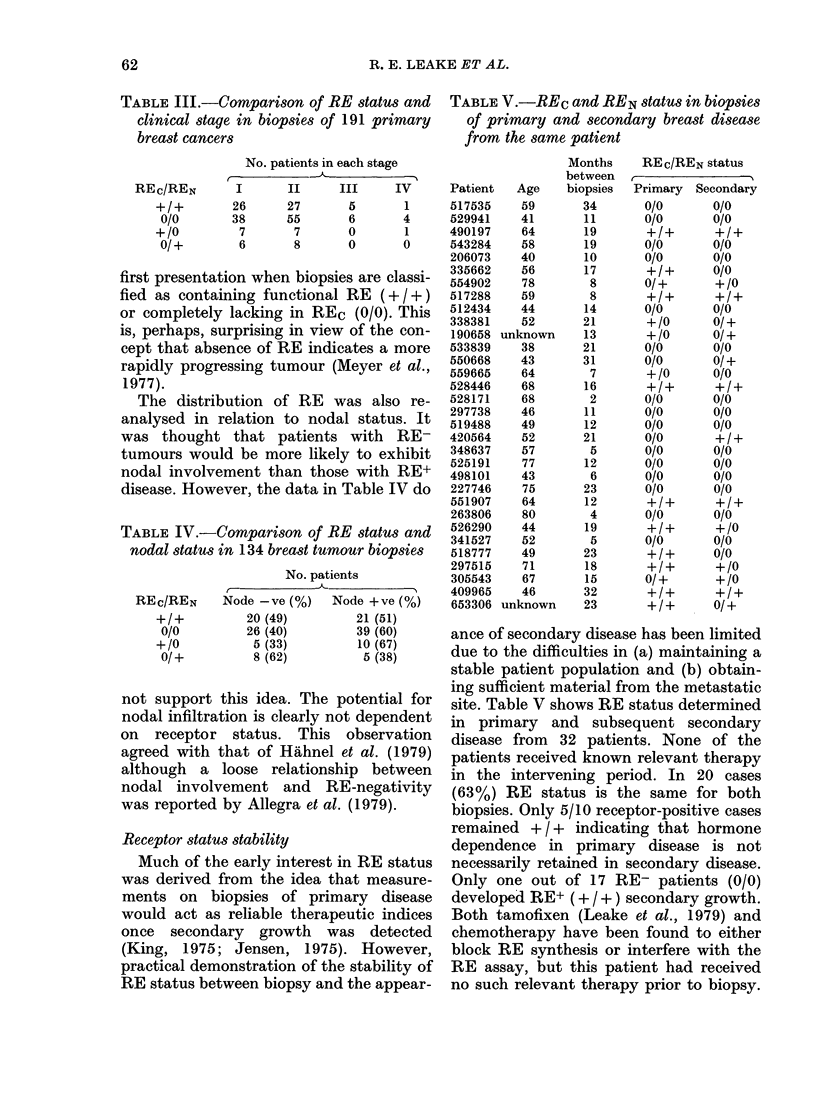
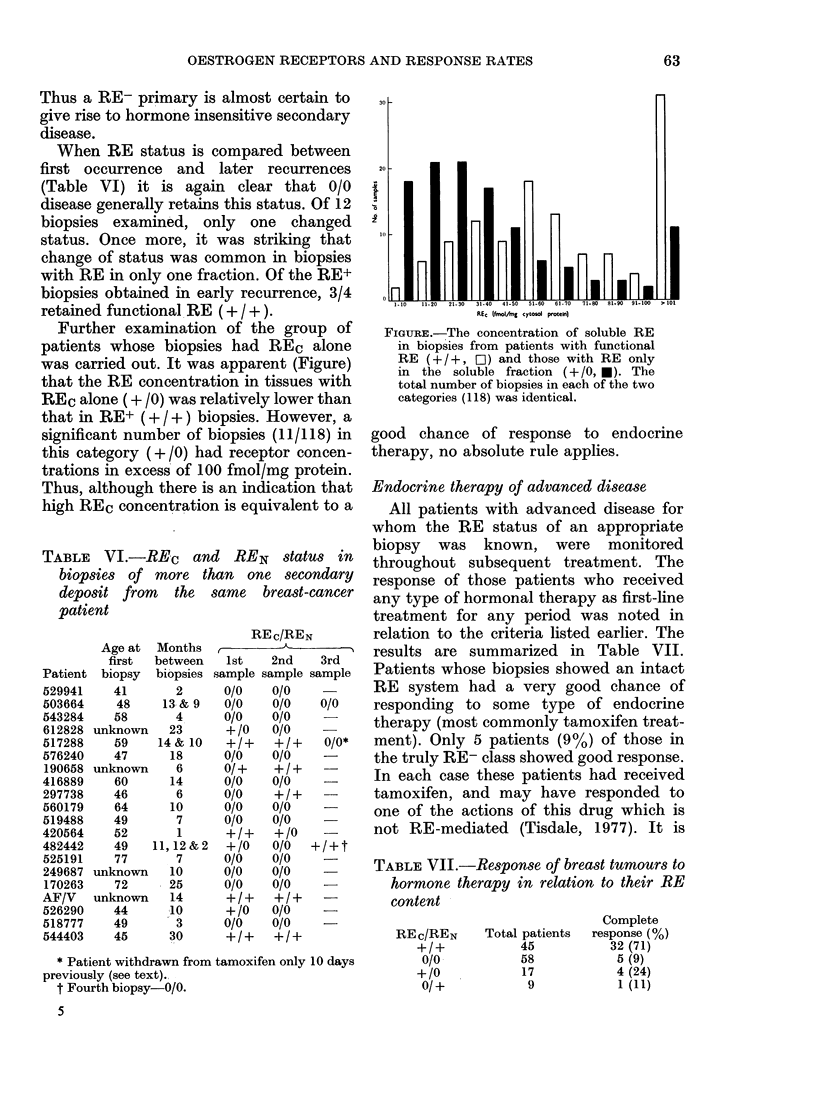
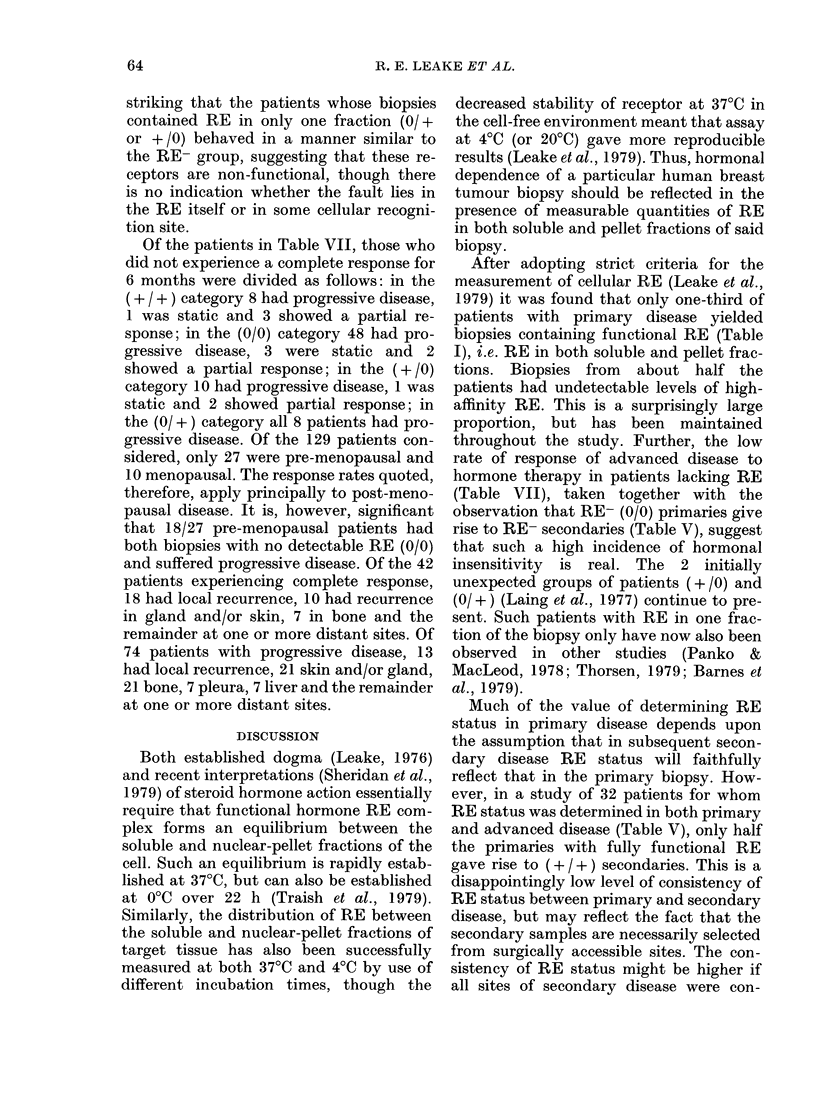
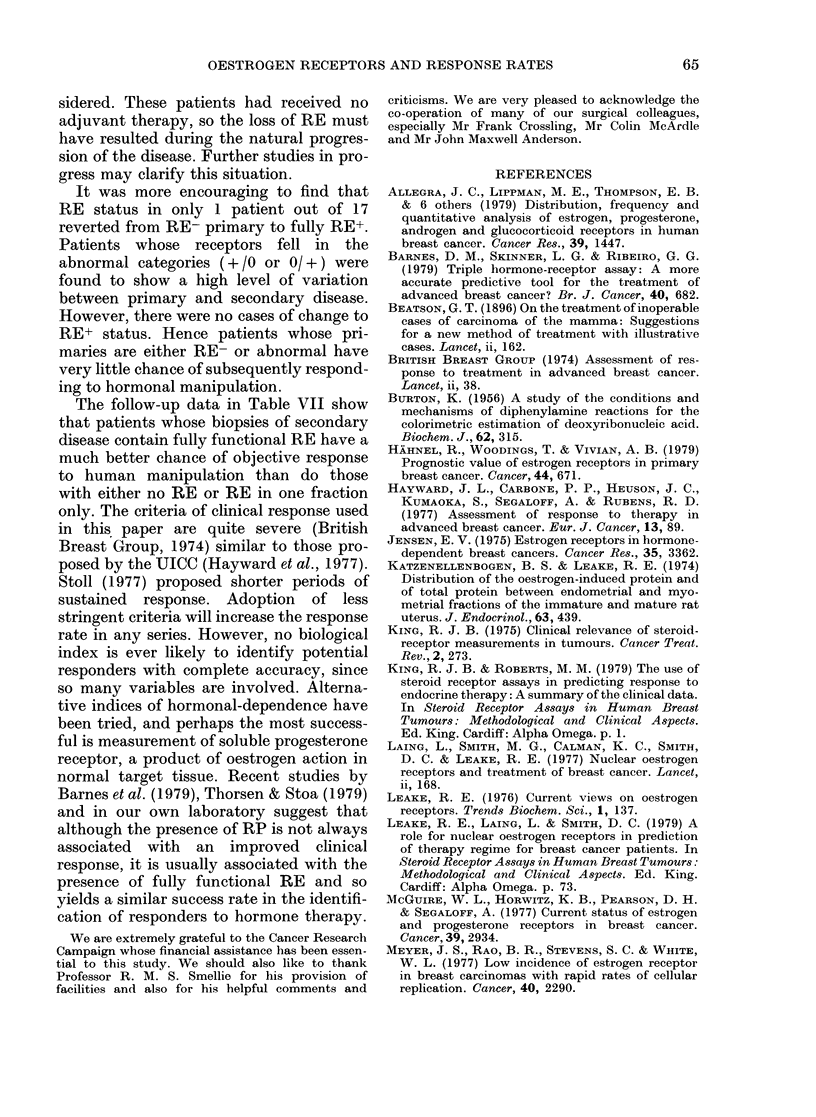
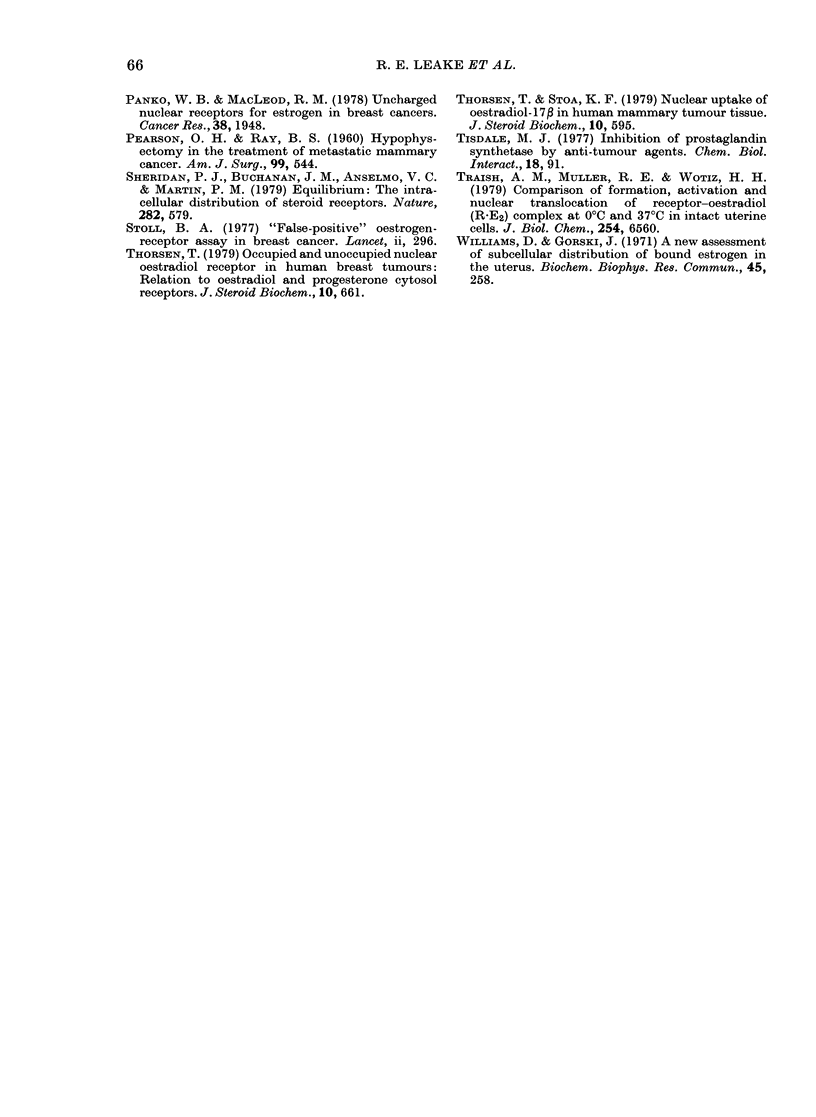
Selected References
These references are in PubMed. This may not be the complete list of references from this article.
- Allegra J. C., Lippman M. E., Thompson E. B., Simon R., Barlock A., Green L., Huff K. K., Do H. M., Aitken S. C. Distribution, frequency, and quantitative analysis of estrogen, progesterone, androgen, and glucocorticoid receptors in human breast cancer. Cancer Res. 1979 May;39(5):1447–1454. [PubMed] [Google Scholar]
- BURTON K. A study of the conditions and mechanism of the diphenylamine reaction for the colorimetric estimation of deoxyribonucleic acid. Biochem J. 1956 Feb;62(2):315–323. doi: 10.1042/bj0620315. [DOI] [PMC free article] [PubMed] [Google Scholar]
- Hähnel R., Woodings T., Vivian A. B. Prognostic value of estrogen receptors in primary breast cancer. Cancer. 1979 Aug;44(2):671–675. doi: 10.1002/1097-0142(197908)44:2<671::aid-cncr2820440238>3.0.co;2-v. [DOI] [PubMed] [Google Scholar]
- Jensen E. V. Estrogen receptors in hormone-dependent breast cancers. Cancer Res. 1975 Nov;35(11 Pt 2):3362–3364. [PubMed] [Google Scholar]
- Katzenellenbogen B. S., Leake R. E. Distribution of the oestrogen-induced protein and of total protein between endometrial and myometrial fractions of the immature and mature rat uterus. J Endocrinol. 1974 Dec;63(3):439–449. doi: 10.1677/joe.0.0630439. [DOI] [PubMed] [Google Scholar]
- King R. J. Clinical relevance of steroid-receptor measurements in tumours. Cancer Treat Rev. 1975 Dec;2(4):273–293. doi: 10.1016/s0305-7372(75)80009-0. [DOI] [PubMed] [Google Scholar]
- Laing L., Smith M. G., Calman K. C., Smith D. C., Leake R. E. Nuclear oestrogen receptors and treatment of breast cancer. Lancet. 1977 Jul 23;2(8030):168–169. doi: 10.1016/s0140-6736(77)90183-0. [DOI] [PubMed] [Google Scholar]
- McGuire W. L., Horwitz K. B., Pearson O. H., Segaloff A. Current status of estrogen and progesterone receptors in breast cancer. Cancer. 1977 Jun;39(6 Suppl):2934–2947. doi: 10.1002/1097-0142(197706)39:6<2934::aid-cncr2820390680>3.0.co;2-p. [DOI] [PubMed] [Google Scholar]
- Meyer J. S., Rao B. R., Stevens S. C., White W. L. Low incidence of estrogen receptor in breast carcinomas with rapid rates of cellular replication. Cancer. 1977 Nov;40(5):2290–2298. doi: 10.1002/1097-0142(197711)40:5<2290::aid-cncr2820400541>3.0.co;2-t. [DOI] [PubMed] [Google Scholar]
- PEARSON O. H., RAY B. S. Hypophysectomy in the treatment of metastatic mammary cancer. Am J Surg. 1960 Apr;99:544–552. doi: 10.1016/0002-9610(60)90149-5. [DOI] [PubMed] [Google Scholar]
- Panko W. B., MacLeod R. M. Uncharged nuclear receptors for estrogen in breast cancers. Cancer Res. 1978 Jul;38(7):1948–1951. [PubMed] [Google Scholar]
- Sheridan P. J., Buchanan J. M., Anselmo V. C., Martin P. M. Equilibrium: the intracellular distribution of steroid receptors. Nature. 1979 Dec 6;282(5739):579–582. doi: 10.1038/282579a0. [DOI] [PubMed] [Google Scholar]
- Stoll B. A. "False-positive" oestrogen-receptor assay in breast cancer. Lancet. 1977 Aug 6;2(8032):296–297. doi: 10.1016/s0140-6736(77)90977-1. [DOI] [PubMed] [Google Scholar]
- Thorsen T. Occupied and unoccupied nuclear oestradiol receptor in human breast tumours: relation to oestradiol and progesterone cytosol receptors. J Steroid Biochem. 1979 Jun;10(6):661–668. [PubMed] [Google Scholar]
- Thorsen T., Stoa K. F. Nuclear uptake of oestradiol-17 beta in human mammary tumour tissue. J Steroid Biochem. 1979 Jun;10(6):595–599. [PubMed] [Google Scholar]
- Tisdale M. J. Inhibition of prostaglandin synthetase by anti-tumour agents. Chem Biol Interact. 1977 Jul;18(1):91–100. doi: 10.1016/0009-2797(77)90144-2. [DOI] [PubMed] [Google Scholar]
- Traish A. M., Müller R. E., Wotiz H. H. Comparison of formation, activation, and nuclear translocation of receptor . estradiol (R . E2) complex at 0 degrees C and 37 degrees C in intact uterine cells. J Biol Chem. 1979 Jul 25;254(14):6560–6567. [PubMed] [Google Scholar]
- Williams D., Gorski J. A new assessment of subcellular distribution of bound estrogen in the uterus. Biochem Biophys Res Commun. 1971 Oct 1;45(1):258–264. doi: 10.1016/0006-291x(71)90078-7. [DOI] [PubMed] [Google Scholar]


